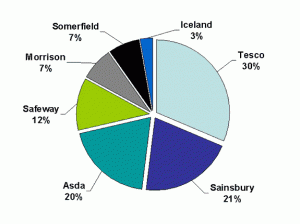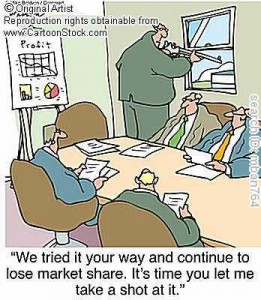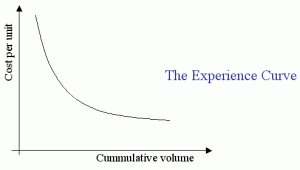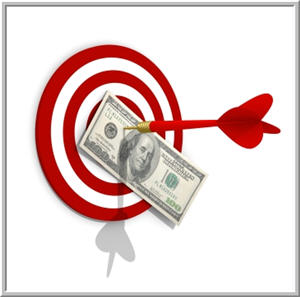Market Share – Competitive Pie Consumption11 Jan
Any self respecting entrepreneur will be all too aware of the challenges facing business owners today. So if we put aside  the implications of precarious employment legislation, or tight fisted banks, and recognise these issues as merely a reflection of a momentary attitude towards the economy, we can then focus on deeper, underlying issues.
the implications of precarious employment legislation, or tight fisted banks, and recognise these issues as merely a reflection of a momentary attitude towards the economy, we can then focus on deeper, underlying issues.
One key factor dominating the thoughts of all business owners, particularly those involved with much larger organisations, is how they are doing in comparison to their competitors and their overall share of the market in which they operate.
First and foremost, acquiring a worthy share of any given market is impossible without a clear and discernible vision and purpose for your business. The pie chart documenting the overall till roll of supermarkets in August 2002 (right) could be used as an accurate indication of the food retail market share between these industry giants. Each and every one of these chains is trying to distinguish themselves from each other as leaders on price, convenience, service, quality, or to simply to capture the public image as ‘somer-thing different.’
 The omission of Waitrose from the chart above is somewhat inconvenient as their market share strategy is very distinct. A clear emphasis on high quality products and consistently friendly service means they can claim ownership of a customer base with a relatively higher disposable income which would negate the sheer volume of shoppers that a chain like Tesco, with a focus on low cost and convenience, would attract.
The omission of Waitrose from the chart above is somewhat inconvenient as their market share strategy is very distinct. A clear emphasis on high quality products and consistently friendly service means they can claim ownership of a customer base with a relatively higher disposable income which would negate the sheer volume of shoppers that a chain like Tesco, with a focus on low cost and convenience, would attract.
Whichever way a business owner chooses to define themselves within a given market, it is key to establish of a common thread in the business that resonates with everyone involved, in order to capture the interest of potential customers. Failure to do so will lead to potential customers rejecting you in favour of the familiar or safer option which in turn may induce the sort of behaviour illustrated in the cartoons (left)
Strategic decisions within a business, marketing or otherwise, will often be in response to what a competitor has done in  order to (re)acquire a competitive advantage for the firm. Exploitation of this advantage will increase the likelihood of a good R.O.I. However, the competitive advantage must be sustainable, as these same strategy decisions can provoke similar responses from rival firms and negate excess profit. For instance, an all-out price cutting war with an industry rival could not only harm short term profits and drive down quality and service standards, but allow other competitors to steal your original identity and isolate you from your original customer base.
order to (re)acquire a competitive advantage for the firm. Exploitation of this advantage will increase the likelihood of a good R.O.I. However, the competitive advantage must be sustainable, as these same strategy decisions can provoke similar responses from rival firms and negate excess profit. For instance, an all-out price cutting war with an industry rival could not only harm short term profits and drive down quality and service standards, but allow other competitors to steal your original identity and isolate you from your original customer base.
Market share is also the primary indicator of a firm’s experience, with marketing strategies likely to become more and more profitable as a firm becomes more familiar with its operations. Experience can increase output and reduce production costs due to economies of scale as a firm reaches full capacity and there is a genuine learning effect as people within the business become more efficient with set tasks, not to mention the reduced waste cost and the technological improvements that will be applied as the business develops.
Now that we have some idea as to the importance of being able to stand out amongst the competition, it would seem appropriate to discuss some of the basic strategies used to achieve this aim. The Basic strategies include:
1. Cost leadership – Obviously only one player in any given market can be the cost leader, and for reasons stated above, trying to do so can be a risky business indeed. This strategy is internally focused and depends on high and efficient volumes of production, as well as minimising your overheads and waste in order to be carried out successfully. Good relations with your suppliers will also help to reduce cost.
It would seem then, that cost leadership should be pursued as an approach suited to a business becoming more and more experienced in its activities for the reasons mentioned earlier, and can be illustrated more simply in through the experience curve (above). A sound understanding of the ‘experience curve’ can allow a business to effectively predict future costs and plan accordingly, whether it be moving towards cost leadership, or even some form of…
2. Product Differentiation – As stated earlier, there can be only one competitor who can offer the best price, so a successful business will be able to capture a share of the market by offering a product of better quality. It may even be as simple as creating the perception that the product is better than the cheaper alternative, whether it be through a superior service experience, or imaginative and skilfully executed marketing strategies. Starbucks, for example, has arguably reached its lofty heights through presenting itself as an organisation that genuinely acts in the interest, not only of its customers, but for the entire marketplace. Thus Starbucks coffee may only need to taste marginally better than its competitors for people to pay a premium for it. 
Those seeking to take this path towards acquiring a competitive market share must therefore have a great depth of knowledge of their rivals and of the industry in which they operate. They must also look beyond the product itself and really connect with their customers in order to get them to pay more. We can also apply these strategies to specific segments of any given market which leads us nicely on to…
3. Niche – Finding a niche in the market can be difficult, but can also be of great value as a business can isolate itself from its competition, through offering a product or service that cannot be replicated by anyone else. Tyrell’s brand potato crisps are grown locally on the producer’s own farm, creating an undeniably strong image of authenticity, further enhanced by their distribution to high end grocery stores where they are sold at a premium. This creates a perception of quality that would attract the crisp equivalent of Waitrose shoppers.
Of course these strategies are both broad and generalist; they do not count for expansion into new industries or how to deal with the introduction of new products. We must also acknowledge that the purchase of tangible goods, such as crisps, does not require a service as such and we need to be aware of things like price sensitivity, price perception and convenience of access. In order to successfully execute the aforementioned strategies, a level of personal understanding of the business’s customers is required but, as discussed in last month’s article, ‘How to purify your Customers,’ this connection can be adapted to suit the needs of the business owner, provided the correct marketing techniques are employed.
With all this in mind you can begin to consume your share of that tasty pie!
One Response to “Market Share – Competitive Pie Consumption”
Leave a Reply












Great article, thanks FAB.
Lots to consider and food for thought (no pun intended) Waitrose is an interesting case study on higher price/higher value added and one that many business owners would love to operate in.
It seems to be the middle ground thats getting hit hardest at the moment with Tesco reporting losses. More extreme offer (Lidl – a steal!) and Waitrose (legal extortion) seem pretty happy.
Understanding your purpose and focusing on it seems to be the winning formula right now.